How to “Train” Readymade Curtains
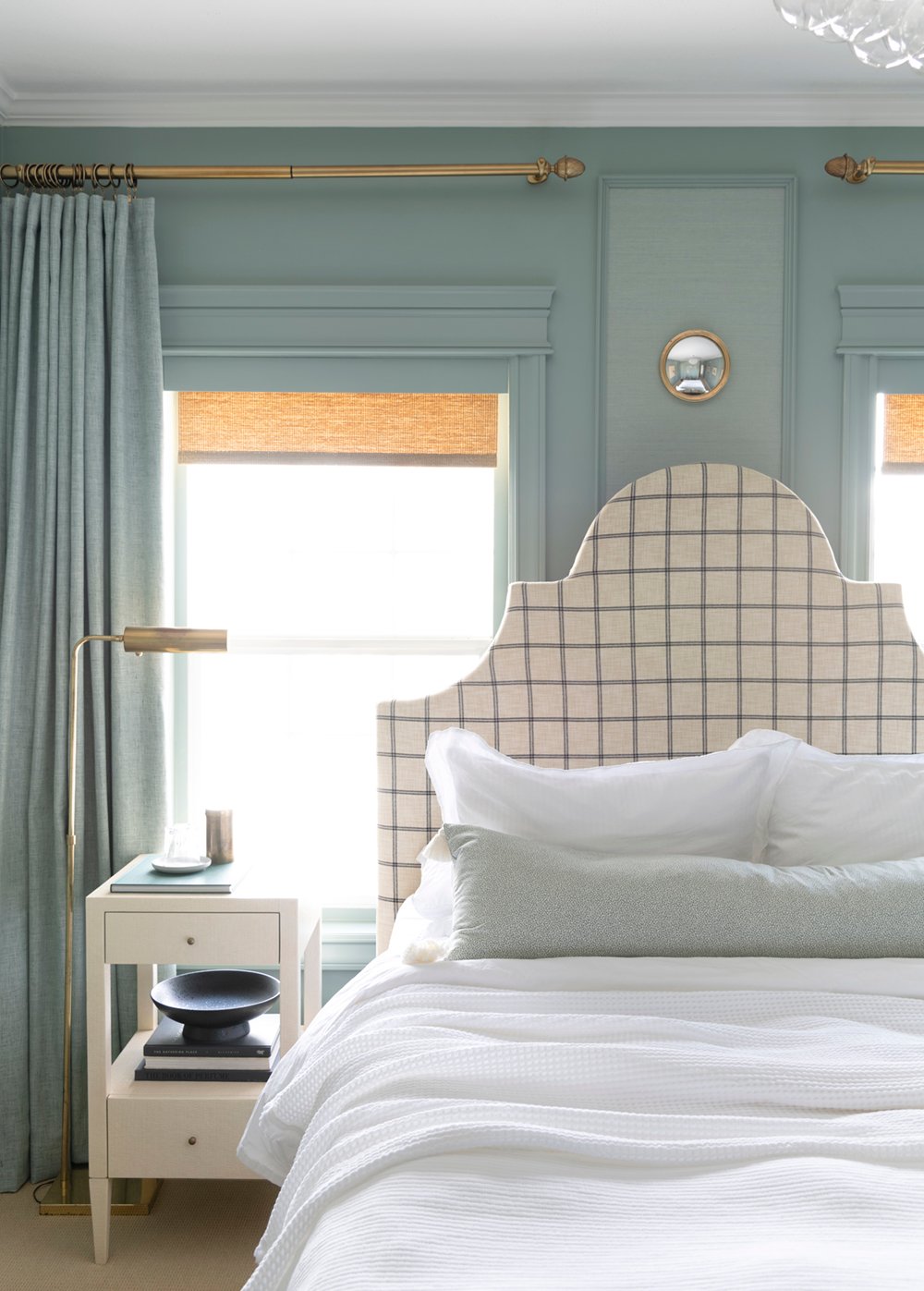 I’ve had this post on my must-write list for awhile now, because I think there is this common misconception that really good looking drapery has to be custom- which typically costs quite a bit of money. Having both high-end (more expensive) custom drapery panels and readymade options throughout my home, I’m here to tell you (as a designer) that some of the budget-friendly options can definitely take on a custom feel… they just require a bit of work and you have to know how to properly “train” them. Click through for my best tips for making your window treatment budget go further, and get my simple 3-step process for training readymade curtains for a custom, designer look… minus the high price tag.
I’ve had this post on my must-write list for awhile now, because I think there is this common misconception that really good looking drapery has to be custom- which typically costs quite a bit of money. Having both high-end (more expensive) custom drapery panels and readymade options throughout my home, I’m here to tell you (as a designer) that some of the budget-friendly options can definitely take on a custom feel… they just require a bit of work and you have to know how to properly “train” them. Click through for my best tips for making your window treatment budget go further, and get my simple 3-step process for training readymade curtains for a custom, designer look… minus the high price tag.
Since all of my curtains have already been trained and I don’t have a new drapery project to photograph from start to finish right now, I’m mixing & matching descriptive images throughout this post to give you a better visual… sound good? I’m going to start with my golden rule when it comes to non custom window treatments…
When buying readymade curtains, you still need to customize your selection to best fit your window and room. While you’re not buying custom, they still require customization to look their best.
It’s easy- I promise!
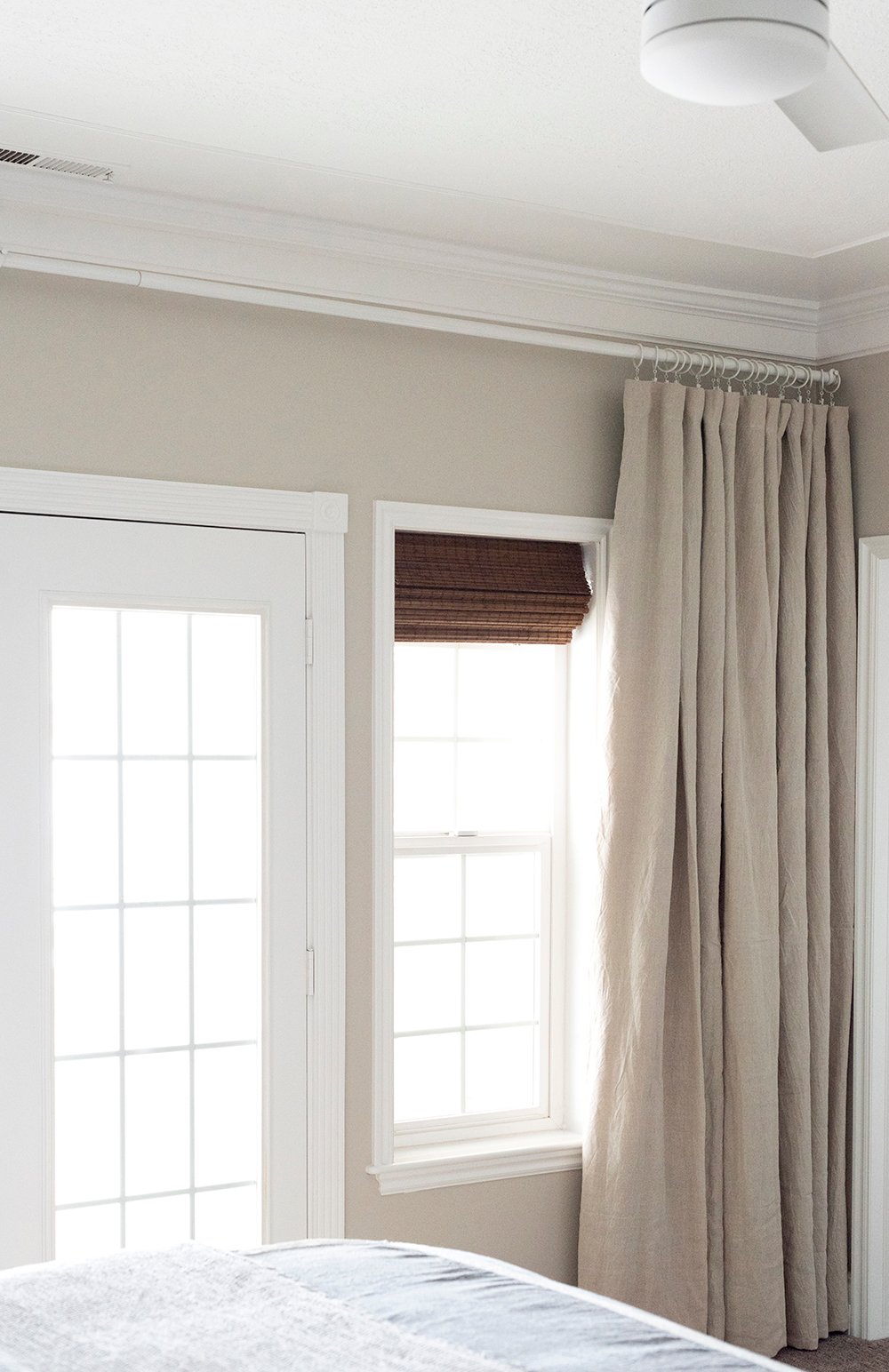 What do I mean by requires customization? You can buy curtains from Amazon, Target, Wayfair, Overstock, wherever… but they’re still going to require a little work on your part. When buying readymade, I almost always end up doing some key things for that functional designer look:
What do I mean by requires customization? You can buy curtains from Amazon, Target, Wayfair, Overstock, wherever… but they’re still going to require a little work on your part. When buying readymade, I almost always end up doing some key things for that functional designer look:
- Invest in Classic or Hidden Hardware (a rod, nice finials, a ceiling track, quality rings, etc)
- Add Curtain Hooks, Pleats, or Clips
- Steam & Iron (at the bare minimum)
- Hem Your Curtains (even if you don’t sew- use fusing tape, which only requires an iron)
- Add Clips & Ties to “Train” Your Curtains (keep scrolling for my process)
Some readymade panels don’t require all of these, but most do. You can save a lot of money if you’re willing to put in a little time. Today I wanted to chat about curtain training. I’ve even been tricked by Ikea curtains- I definitely thought they were custom, but one of my designer friends simply trained hers. It makes a BIG difference. So, what exactly is curtain training?
Curtain training is manipulating a panel, so it falls in the direction you’d like, creating an even, custom, tailored look. Curtains (or any fabric) will hold their shape and position if you train them!
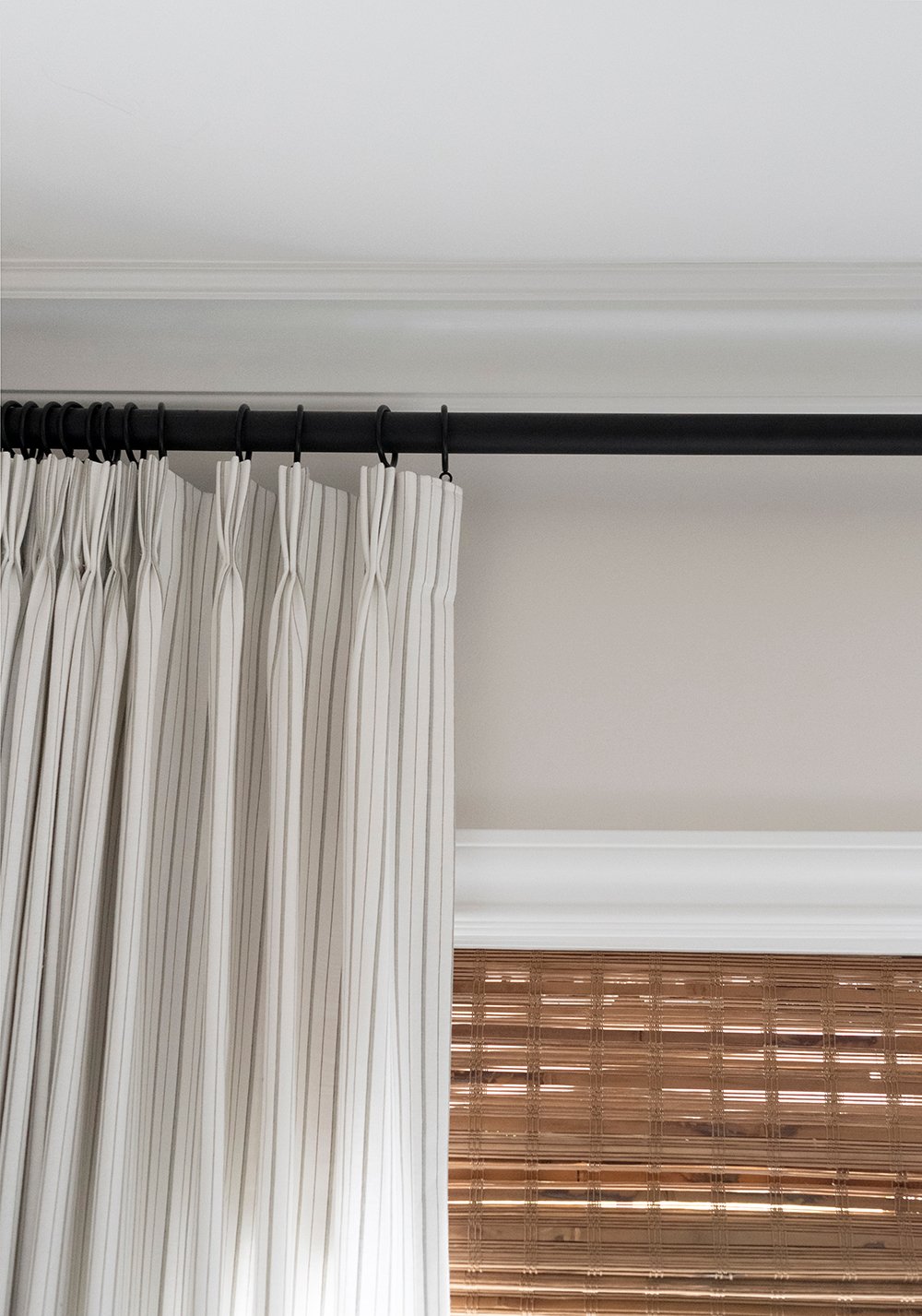 How do we curtain train? I’ll show you my process below, but it requires the following: ironing or steaming (sometimes both), spraying the curtain with water (you can also use ironing starch), clipping or tying them, and training them into position. Sometimes it can take a few days, but it’s easy and requires minimal effort. Here is my simple 3-step process:
How do we curtain train? I’ll show you my process below, but it requires the following: ironing or steaming (sometimes both), spraying the curtain with water (you can also use ironing starch), clipping or tying them, and training them into position. Sometimes it can take a few days, but it’s easy and requires minimal effort. Here is my simple 3-step process:
Step 1… Measure & Pleat or Clip
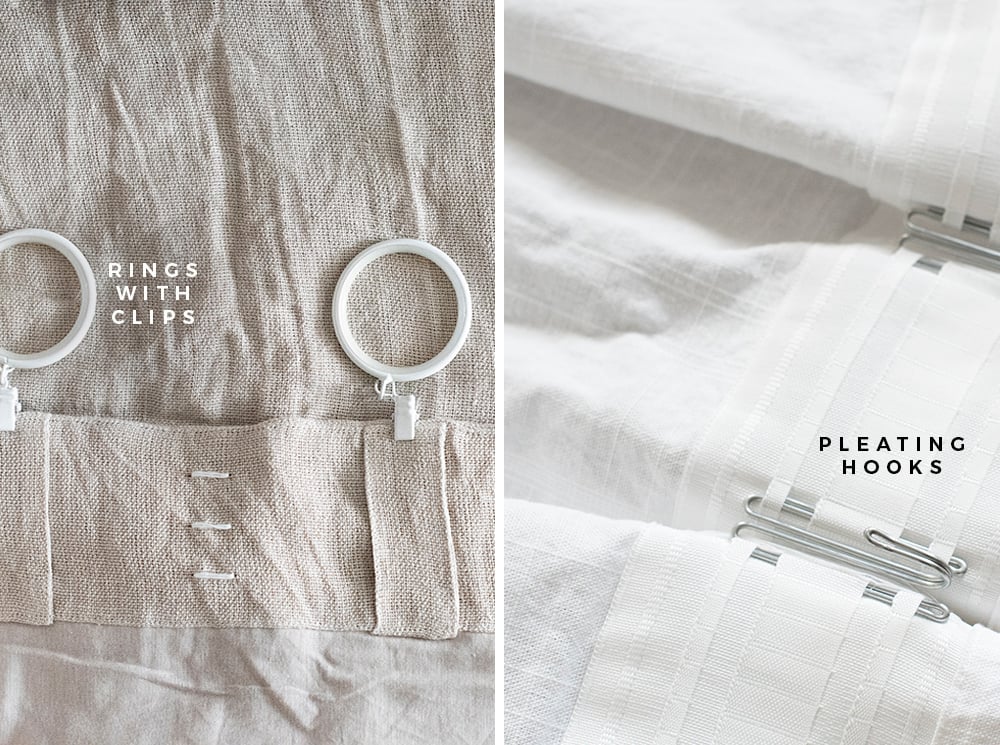 Once you’ve found a good readymade panel to install alongside your hardware, the first step is to pleat & clip the panels. You can either use rings with curtain clips or pleating hooks for a tailored look.
Once you’ve found a good readymade panel to install alongside your hardware, the first step is to pleat & clip the panels. You can either use rings with curtain clips or pleating hooks for a tailored look.
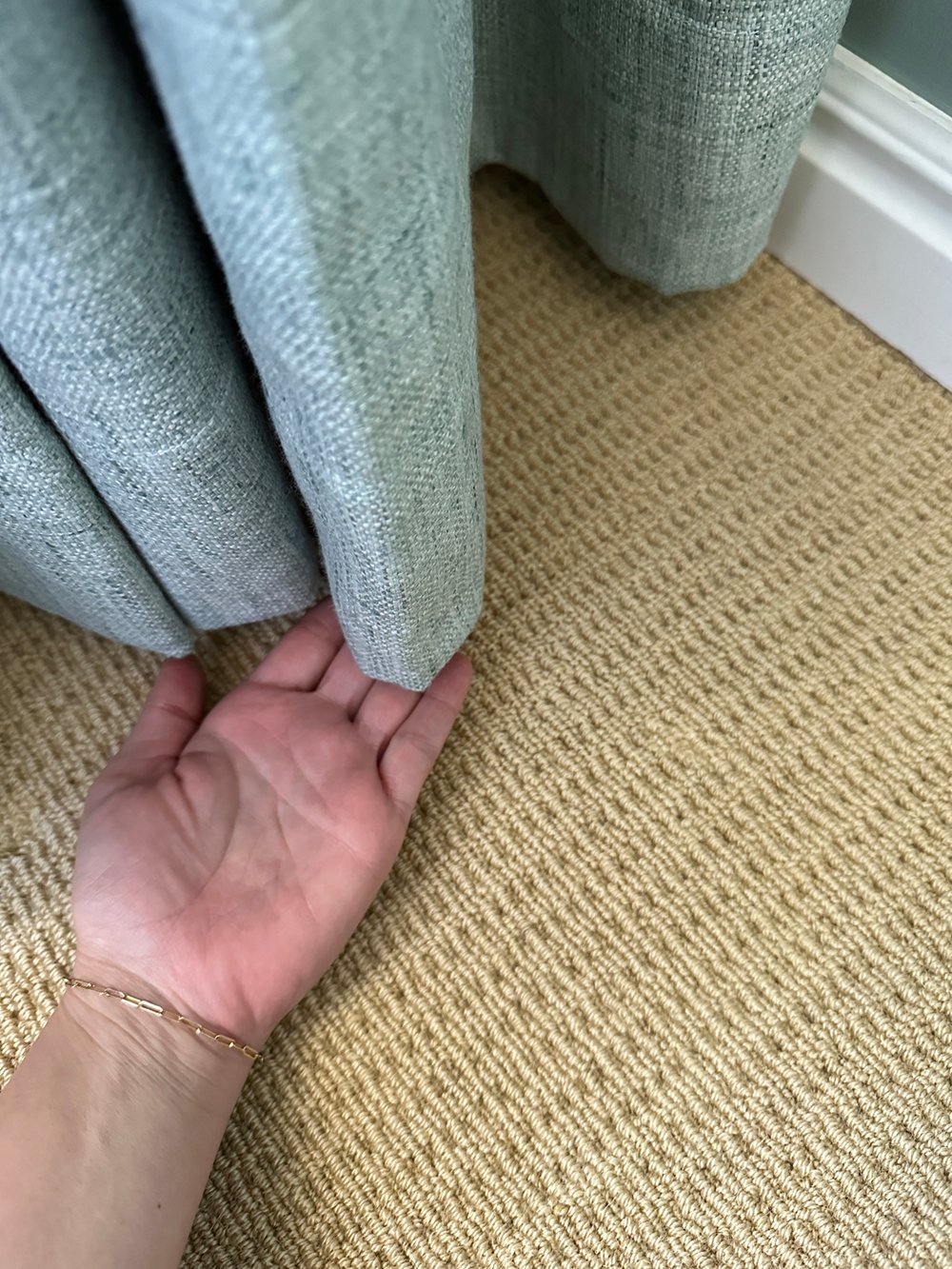 Next, temporarily hang them up and measure carefully. What exactly are you measuring for? We’re looking at the length because the next step is hemming! Your curtains should barely “kiss” the floor. I’m not a fan of puddling, so I prefer my curtains to float 1/4-1/2″ above the floor. Keep in mind, some materials will stretch as they hang- so make sure you account for that. The goal is to hem your curtains once, so measure twice, account for stretch, and proceed with confidence! You should be able to slide your hand between the floor and the curtain, if you’re eyeballing it.
Next, temporarily hang them up and measure carefully. What exactly are you measuring for? We’re looking at the length because the next step is hemming! Your curtains should barely “kiss” the floor. I’m not a fan of puddling, so I prefer my curtains to float 1/4-1/2″ above the floor. Keep in mind, some materials will stretch as they hang- so make sure you account for that. The goal is to hem your curtains once, so measure twice, account for stretch, and proceed with confidence! You should be able to slide your hand between the floor and the curtain, if you’re eyeballing it.
Step 2… Hem, Iron & Hang
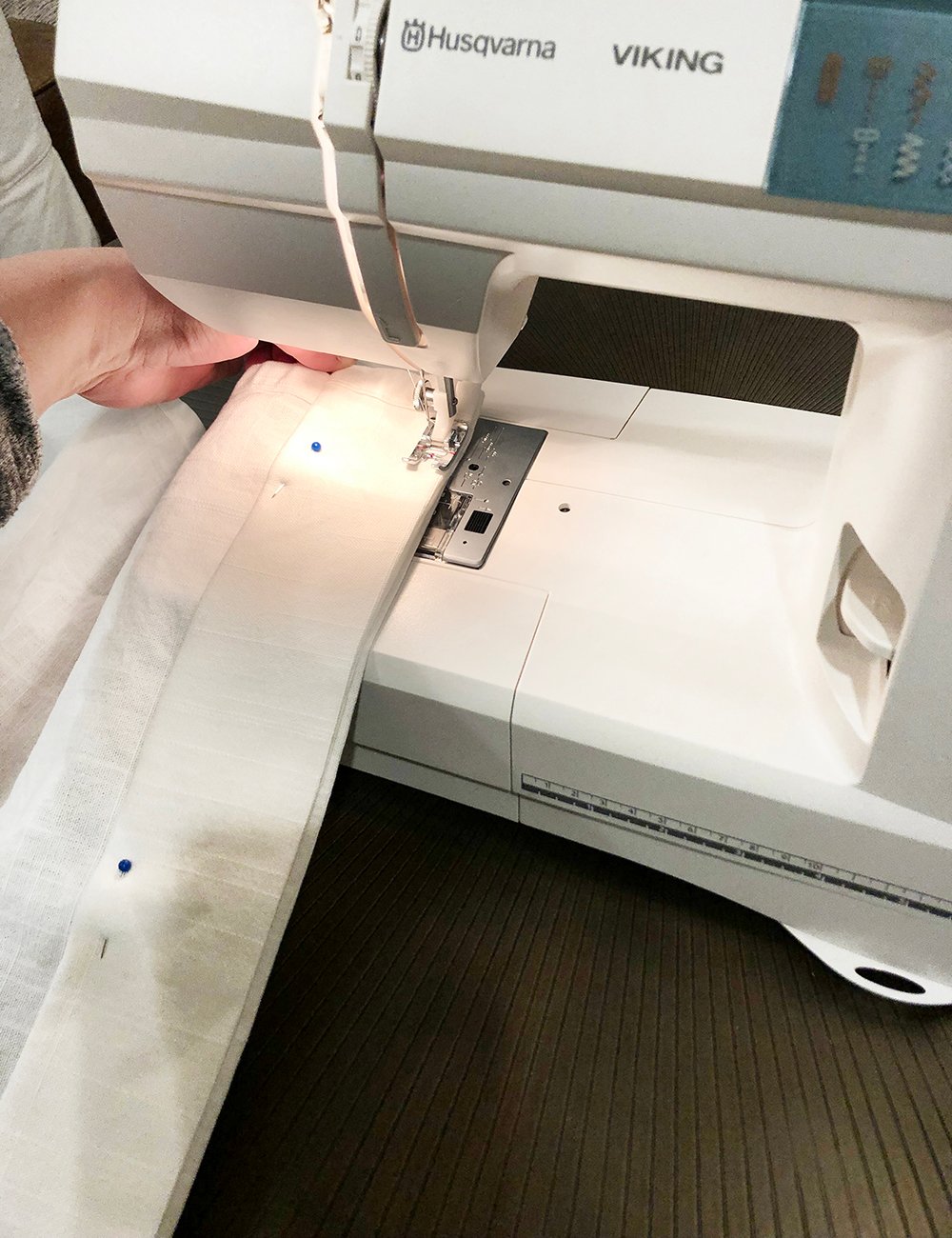 If you don’t sew, it’s ok- there is an additional way to hem your curtains and it only requires an iron. Buy yourself a pack of fusing tape. Fold the curtains into their hemmed position, sandwiching the fusing tape in the center of the fold, then iron to bond & set the hem… it’s easy!
If you don’t sew, it’s ok- there is an additional way to hem your curtains and it only requires an iron. Buy yourself a pack of fusing tape. Fold the curtains into their hemmed position, sandwiching the fusing tape in the center of the fold, then iron to bond & set the hem… it’s easy!
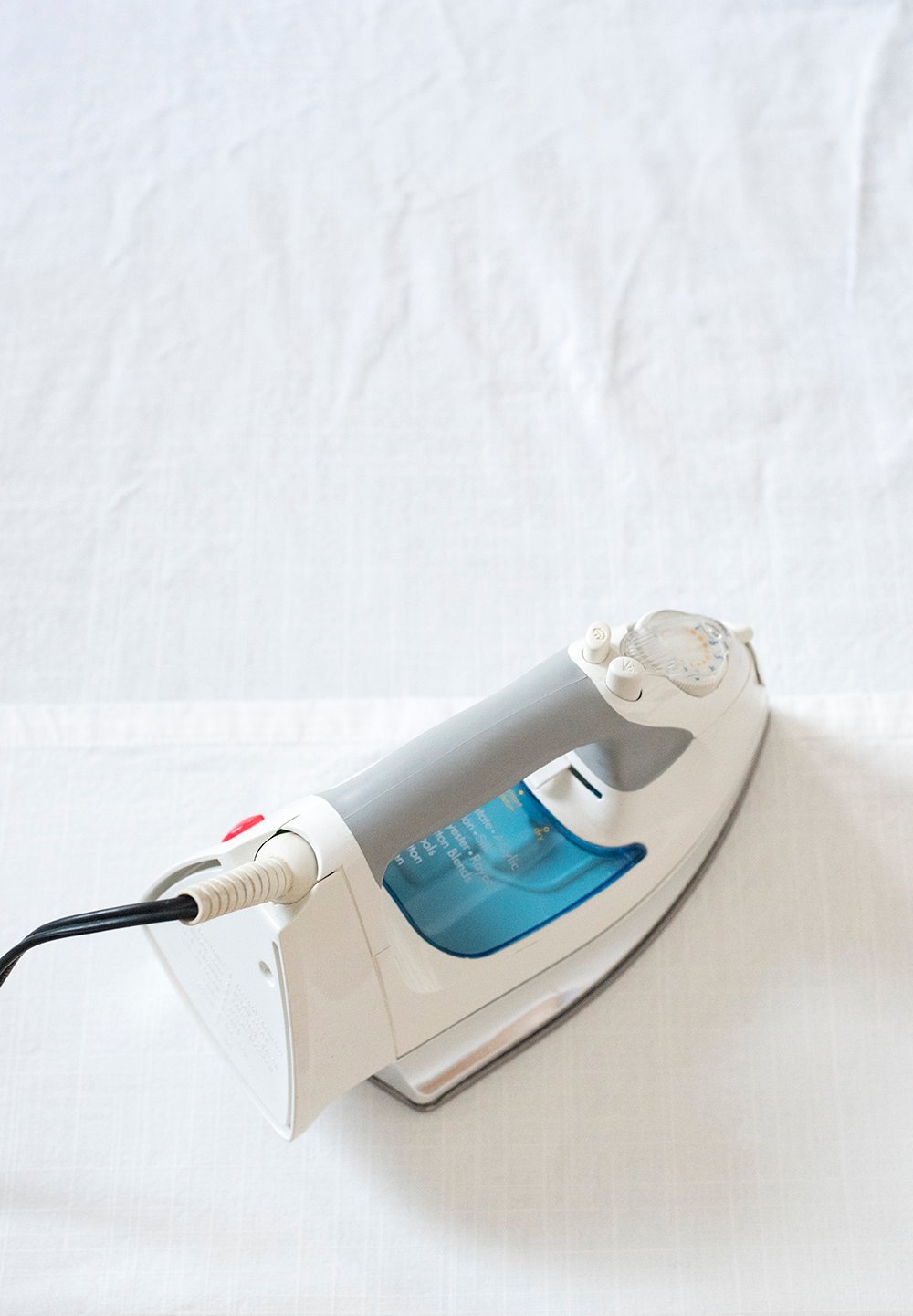 Once your curtains have been hemmed, iron them while they’re down and easy to maneuver, then install & hang them.
Once your curtains have been hemmed, iron them while they’re down and easy to maneuver, then install & hang them.
Step 3… Steam & Train
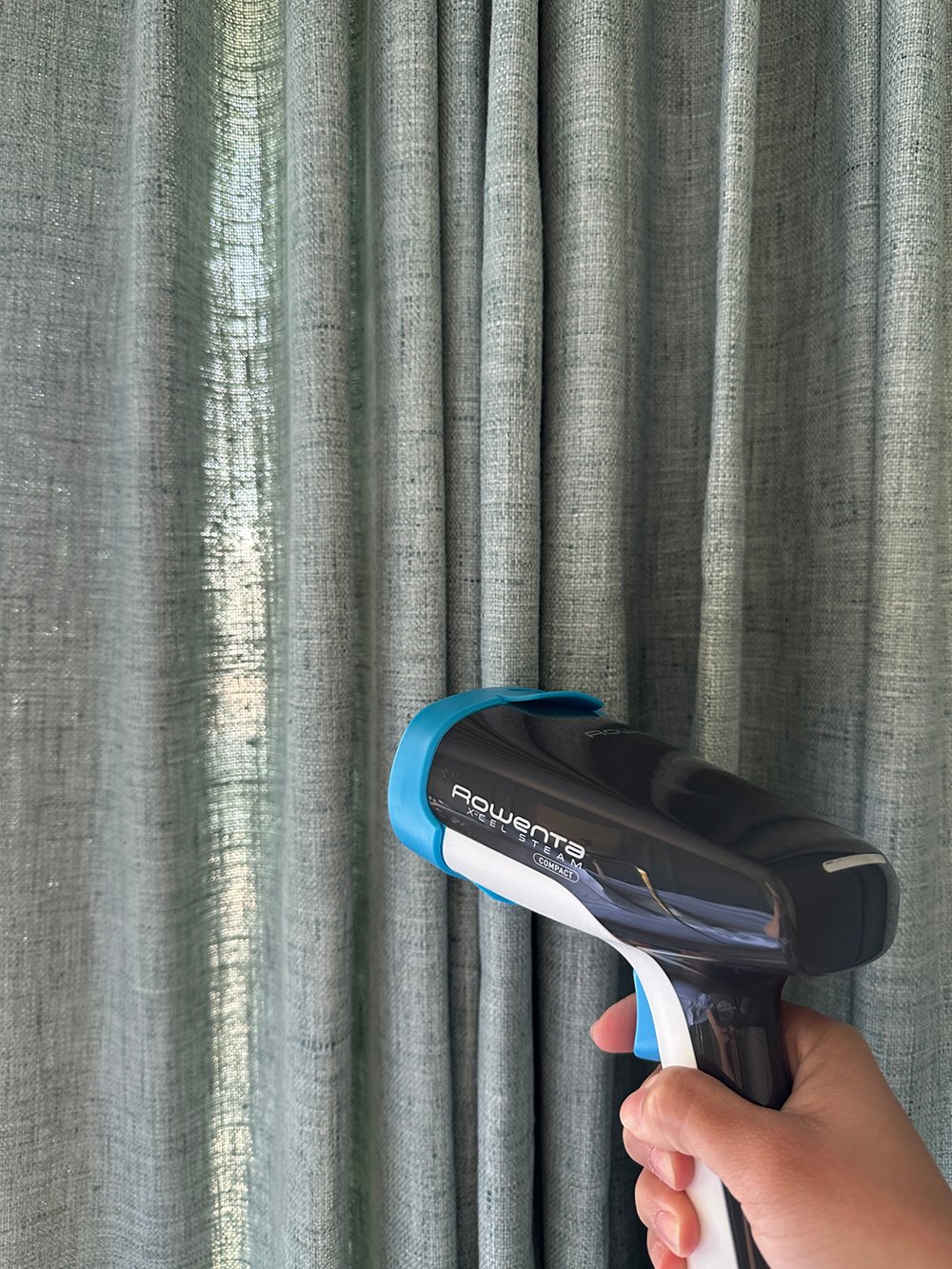 Once they’re installed, bust out your steamer. Typically they’ll get some wrinkles or indentations during the installation process and you’ll want them to look perfect prior to training. Steaming will also help them settle and stretch as they hang.
Once they’re installed, bust out your steamer. Typically they’ll get some wrinkles or indentations during the installation process and you’ll want them to look perfect prior to training. Steaming will also help them settle and stretch as they hang.
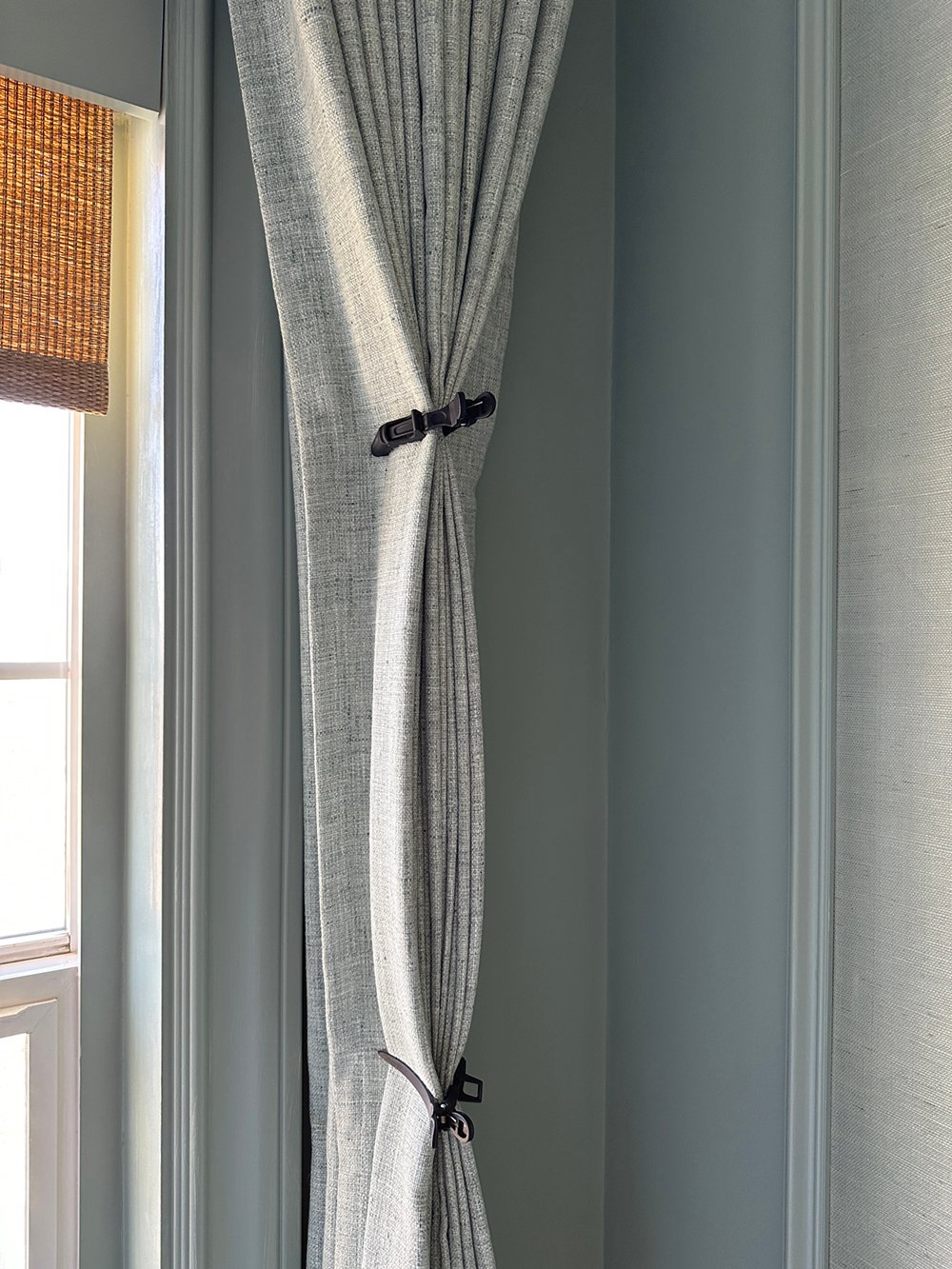 Now for the training… I like to use hair clips to hold the pleats temporarily while I’m working and manipulating the fabric- they’re easier to adjust. Working from side-to-side and top-to-bottom, evenly fold & pleat the curtains. Make sure they’re consistent because this is how they’ll hang once they’re trained.
Now for the training… I like to use hair clips to hold the pleats temporarily while I’m working and manipulating the fabric- they’re easier to adjust. Working from side-to-side and top-to-bottom, evenly fold & pleat the curtains. Make sure they’re consistent because this is how they’ll hang once they’re trained.
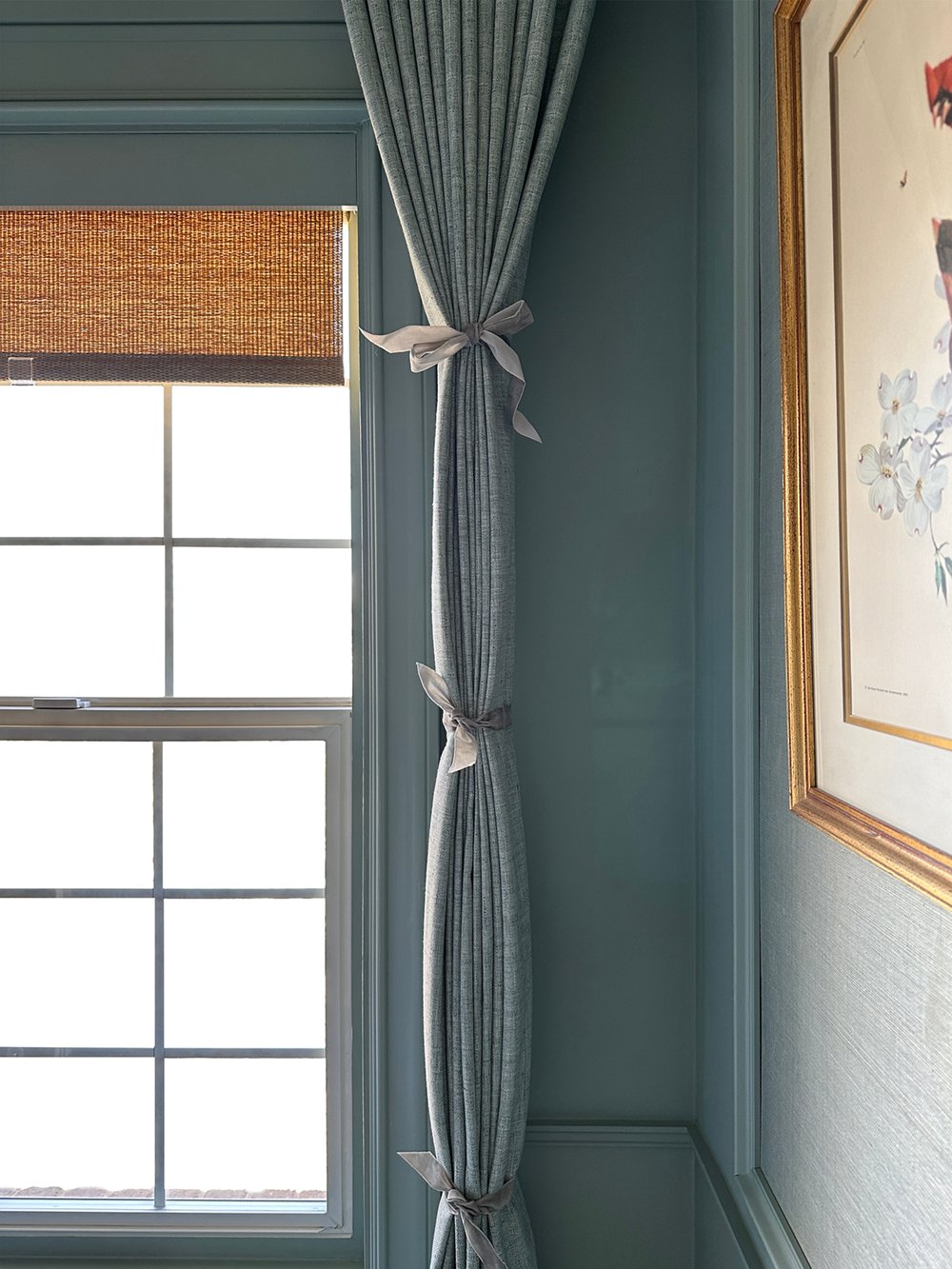 Once you have them fixed as you’d like, use ribbon or string to tie them into place. Tie them 3-4 times from top to bottom, give them a spritz of linen spray, starch, or water, and allow them to rest in place (tied up) for a few days. Undo them and voilà- perfect drapery panels!
Once you have them fixed as you’d like, use ribbon or string to tie them into place. Tie them 3-4 times from top to bottom, give them a spritz of linen spray, starch, or water, and allow them to rest in place (tied up) for a few days. Undo them and voilà- perfect drapery panels!
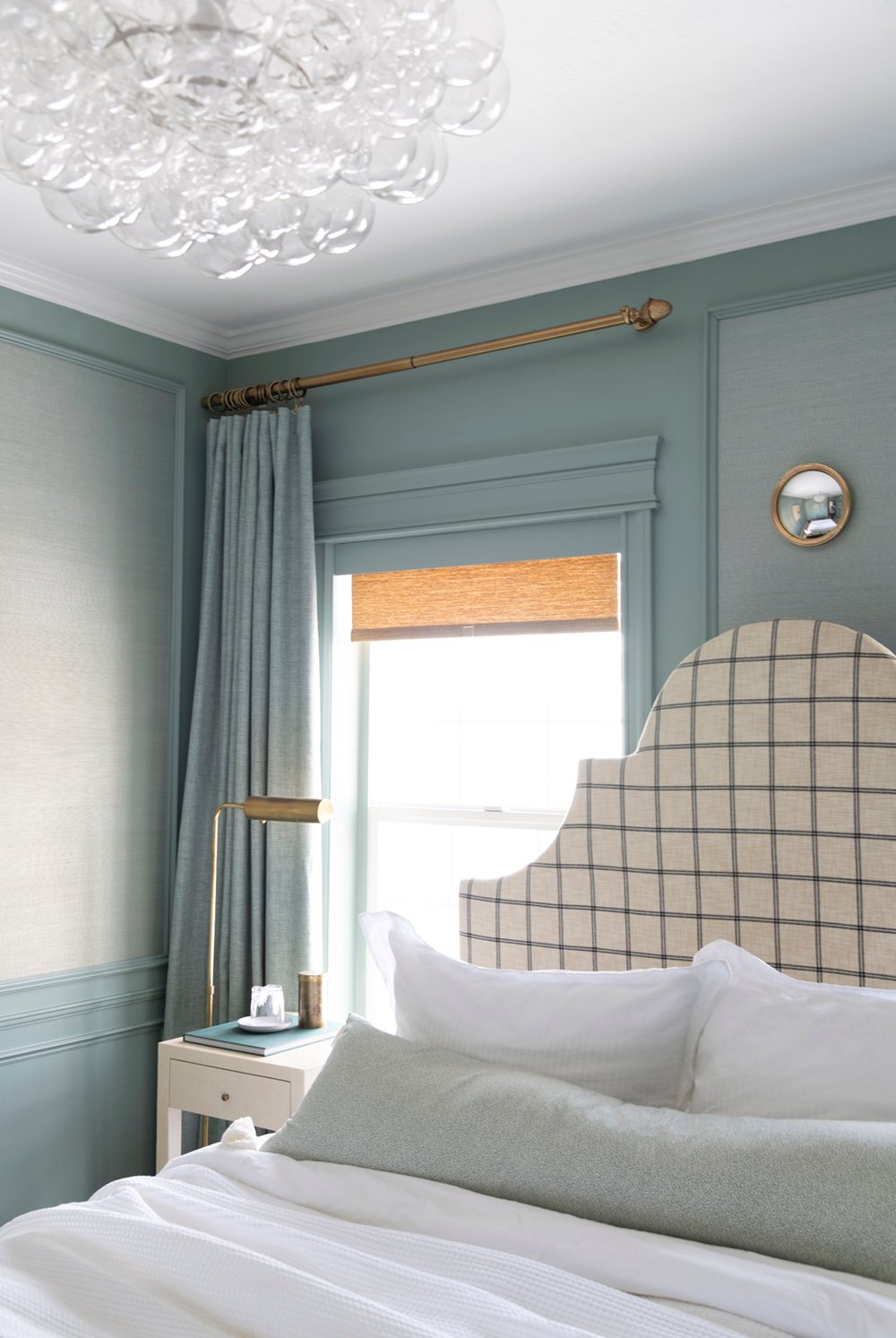 If you’re looking for additional informative posts on window treatments, I’ll link a bunch for you below:
If you’re looking for additional informative posts on window treatments, I’ll link a bunch for you below:
- Readymade Pleated Curtains & Drapery Panels
- Custom Window Treatments : The Process
- Designer Trick : Specifying Window Treatments
- How to Install Casual Linen Drapery Panels
- Amazon Finds : Window Treatments
- How to Hang Artwork in Front of Curtains
- Window Treatment Pairings
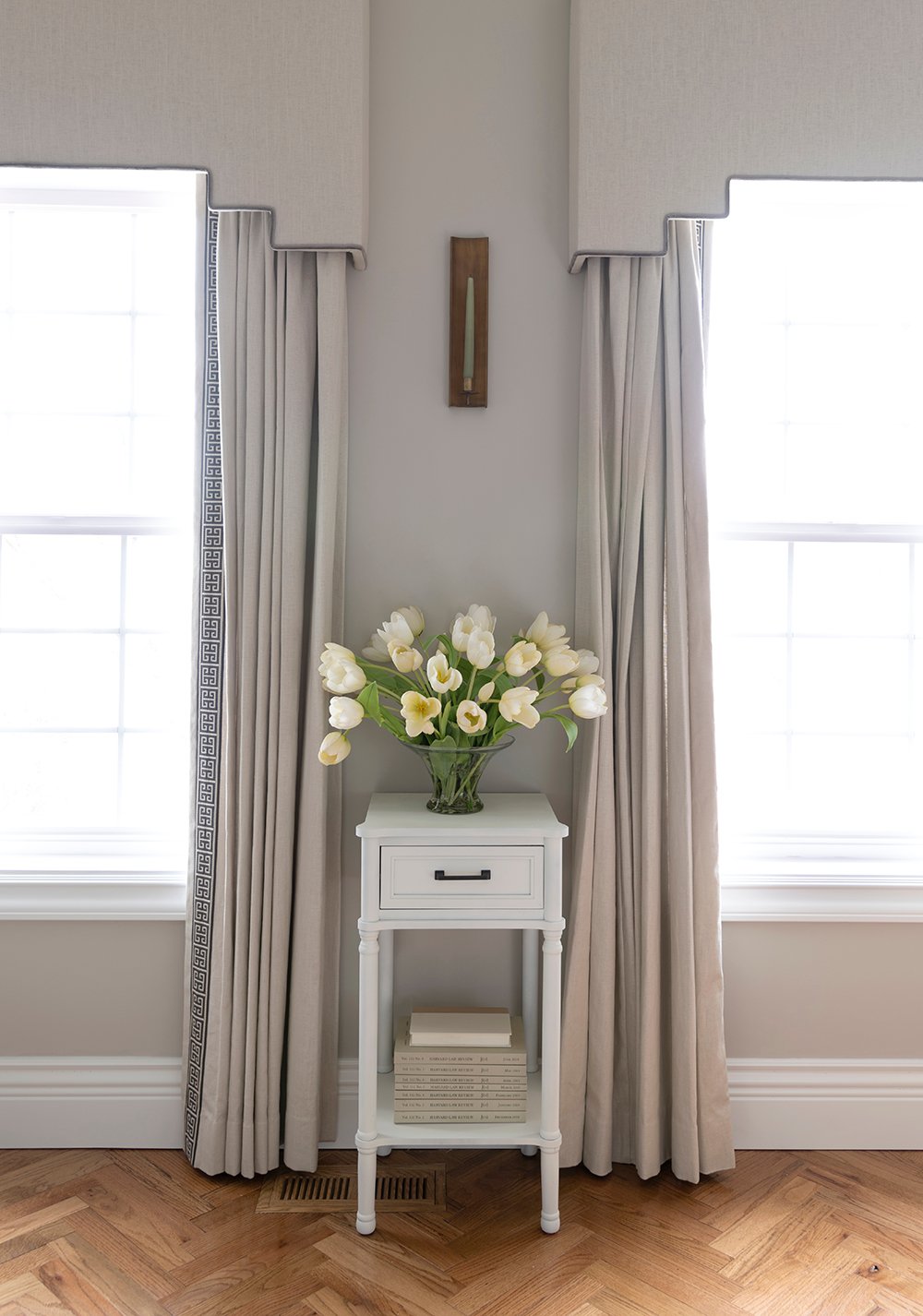 I’ll also link some of my favorite readymade panels for you in a slider at the bottom of the post. Please let me know if you have any questions about my process or window treatments in general. I’m always happy to help! You really don’t have to spend an arm and a leg on custom window treatments for a designer look if it’s not in your budget. It definitely requires some effort to get there though! I hope this post was helpful.
I’ll also link some of my favorite readymade panels for you in a slider at the bottom of the post. Please let me know if you have any questions about my process or window treatments in general. I’m always happy to help! You really don’t have to spend an arm and a leg on custom window treatments for a designer look if it’s not in your budget. It definitely requires some effort to get there though! I hope this post was helpful.

